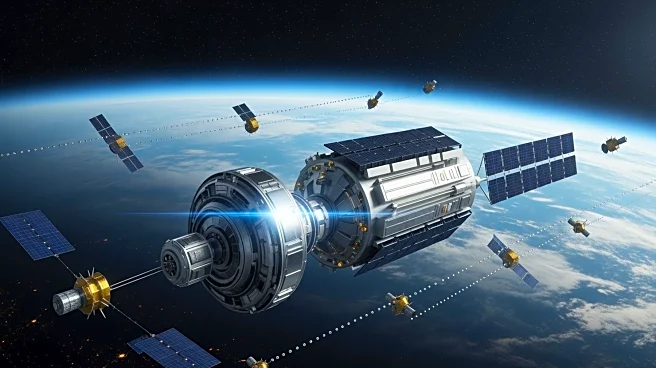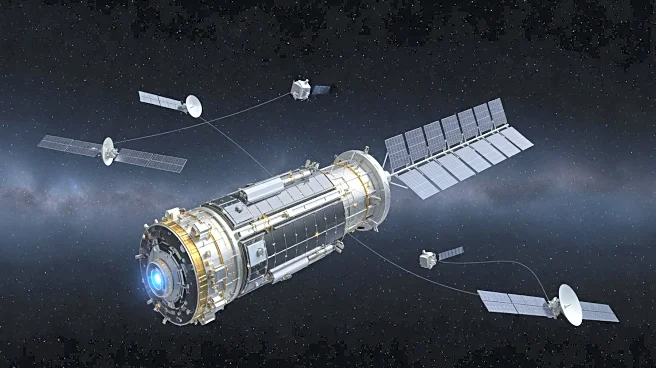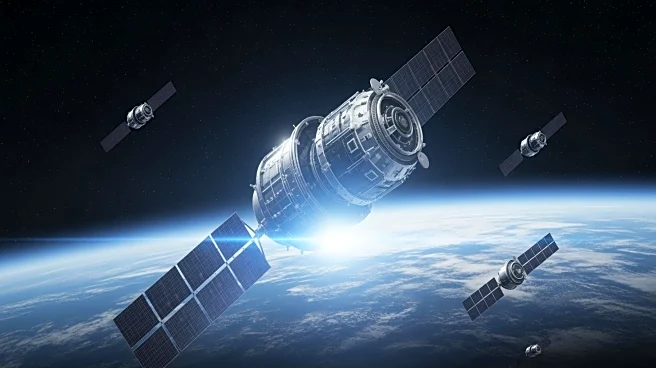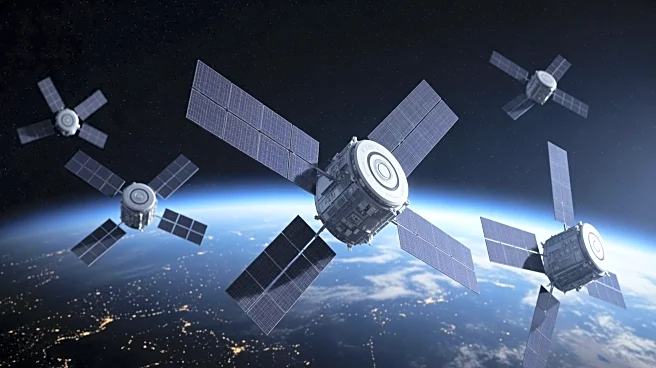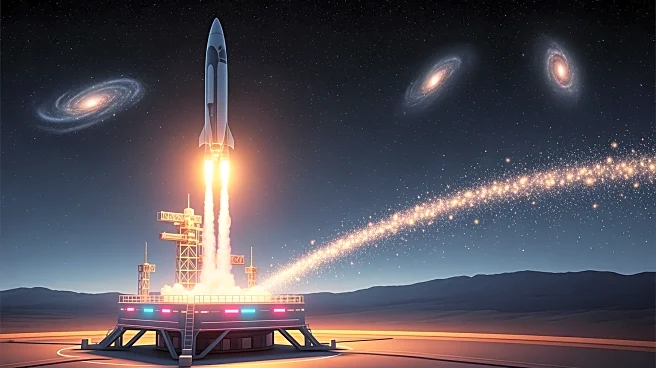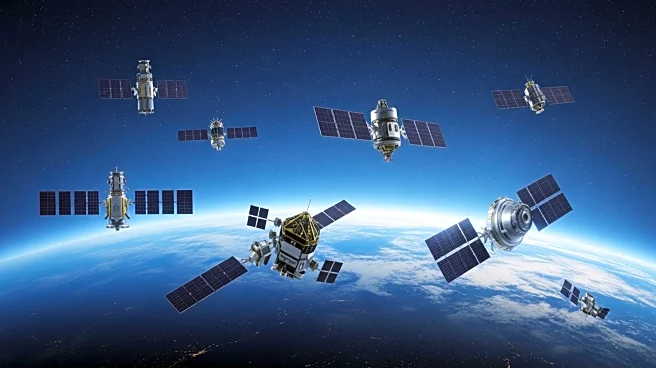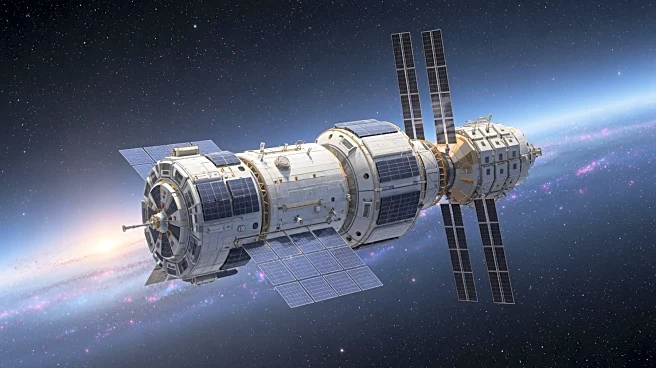What's Happening?
SpaceX successfully launched 28 Starlink broadband satellites on a Falcon 9 rocket from Vandenberg Space Force Base. This launch marks the fourth from Vandenberg in 2025, bringing the total number of Starlink satellites launched this
year to 2,600. The mission, designated Starlink 11-14, lifted off from Space Launch Complex 4 East at 1:13 p.m. PST, following a south-easterly trajectory along the California coastline. The Falcon 9 first stage booster, identified as B1093, completed its eighth flight, having previously supported missions for the Space Development Agency and other Starlink batches. The booster successfully landed on the drone ship 'Of Course I Still Love You' in the Pacific Ocean, marking the 163rd landing on this vessel and the 530th booster landing overall.
Why It's Important?
The continued deployment of Starlink satellites is significant for expanding global internet coverage, particularly in remote and underserved areas. SpaceX's ability to reuse boosters effectively reduces launch costs and increases the frequency of satellite deployments, enhancing the company's competitive edge in the satellite internet market. The growing constellation of Starlink satellites also underscores the increasing demand for reliable internet access worldwide, which can drive economic growth and improve communication infrastructure. Additionally, the successful landing of the booster highlights advancements in reusable rocket technology, which is crucial for sustainable space exploration and reducing the environmental impact of launches.
What's Next?
SpaceX plans to continue its aggressive launch schedule, aiming to expand the Starlink network further. Future launches will likely focus on increasing the density of satellites in low Earth orbit to improve service quality and coverage. As the constellation grows, SpaceX may face challenges related to space traffic management and collision avoidance, necessitating advancements in space domain awareness technologies. The company is also expected to explore partnerships and regulatory approvals to expand Starlink services globally, potentially influencing international telecommunications policies.
Beyond the Headlines
The rapid expansion of satellite constellations raises concerns about space debris and the long-term sustainability of satellite operations. As more companies enter the satellite internet market, regulatory bodies may need to establish stricter guidelines to ensure safe and responsible use of space. Additionally, the proliferation of satellites could impact astronomical observations, prompting discussions on balancing technological advancement with scientific research.



